General Information
What: Advances in Earth Sciences Research Conference (AESRC)
Where: Bioscience Complex Atrium & Bioscience 1102 Lecture Hall, Queen’s University (116 Barrie Street)
When: March 31st to April 2nd
Who: Graduate students and upper year undergraduate students
Why: Share your research, network, practice speaking skills, prizes!
Attire: Business casual
The Department of Geological Sciences and Geological Engineering at Queen’s University would like to formally invite all graduate students and upper year undergraduate student to the 19th Annual Advances in Earth Sciences Research Conference (AESRC), March 31st to April 2nd, 2023. This is a student-run conference that provides students in earth sciences to present their research in a multi-disciplinary, academic, and inclusive setting.
Research from all stems of earth science is welcomed at AESRC 2023. This includes but isn’t limited to mineralogy, igneous and metamorphic petrology, geochemistry, sedimentology, paleontology, geophysics and tectonics, economic and resource geology, environmental geochemistry, and geological engineering!
Awards for best posters and presentations will be generously supported by our conference sponsors.
Abstracts
Extended deadline for submitting abstracts: Wednesday, March 15th (midnight EST).
You can submit your abstract here: AESRC 2023 Abstract Submission Form
Abstract acceptance emails with begin to be sent out Monday, March 6th.
Conference Schedule
Friday, March 31st
| 7:00-11:00pm | Check-in and Registration (Grad Club, 162 Barrie Street |
Note that presentations will take place in the Bioscience 1102 Lecture Hall. Posters, breakfasts, lunches, and coffee breaks will be in the Bioscience Atrium.
Saturday, April 1st
| 8:30-9:00am | Poster set-up |
| 8:45-9:30am | Registration and Breakfast |
| 9:30-9:40am | Opening Remarks |
| 9:40-10:10am |
Keynote Speaker: Environmental Geoscience - Dr. Bas Vriens Title: Trace metal cycling in the Great Lakes: sources, sinks, and biogeochemical controls |
|
10:10-10:30am 10:30-10:50am 10:50-11:10am |
Session 1: Environmental & Quaternary Geoscience (Sponsored by the Canadian Geophysical Union) Sophia Zamaria Understanding the Big Creek Watershed: Watershed modelling and retrospective analyses to determine long- and short-term trends in flow regime and phosphorus loading Nathan Beckner-Stetson Investigating the impacts of land use on water quality in the Halton Region Riley Wells Modelling ground water pollution using the spectral element method |
| 11:10-11:30am | AESRC Annual General Meeting |
| 11:30-1:15pm | Lunch and Poster Session 1 |
| 1:15-1:30pm | President of Canadian Geophysical Union – Julian Lowman |
| 1:30-2:00pm |
Keynote Speaker: Economic Geology - Dr. Tarryn Cawood Title: Critical metal distributions in VMS deposits: The role of sulfide modification during hydrothermal activity, deformation, and metamorphism |
|
2:00-2:20pm 2:20-2:40pm 2:40-3:00pm |
Session 2: Economic Geology (Sponsored by the Society of Economic Geologists Canadian Federation & Prospectors and Developers Association of Canada) McLean Trott The role of machine learning in exploration and mining: Turning real-time data acquisition into actionable information Liam Blackie An inside scoop into the mining industry Allie Surrette Assessing heterogeneity within the Cantung Mine tailings; environmental and value impacts |
| 3:00-3:30pm | Coffee Break |
| 3:30-4:00pm | Early Career Guest Panel: Dr. David McLagan, Lindsay Waffle, MSc., and Dr. Ryan Dhillon |
|
4:00-4:20pm 4:20-4:40pm |
Session 3: Geophysics (Sponsored by the Canadian Society of Exploration Geophysicists) Fadhli Atarita On the evolution of thermal structures in 4.5-billion-year mantle convection models Stephanie Bringeland Terrestrial water storage derived from the Gravity Recovery and Climate Experiment and Follow-On Missions |
| 6:00-10:00pm | Conference Dinner at the Tir Nan Og Irish Pub (200 Ontario Street) |
Sunday, April 2nd
| 8:45-9:30am | Breakfast |
| 9:30-10:00am |
Keynote Speaker: Sedimentology, Paleoenvironments, Paleontology, Oh My! - Dr. Anthony Chappaz Title: A new approach to investigate critical metal resources: Molecular Geochemistry |
|
10:00-10:20am 10:20-10:40am 10:40-11:00am 11:00-11:20am 11:20-11:40am |
Session 4: Sedimentology, Paleoenvironments, Paleontology, Oh My! (Sponsored by Professional Geoscientists of Ontario) Danielle Fitzgerald The Ediacaran Mall Bay Formation, Newfoundland, Canada, and protracted onset of the Gaskiers Glaciation Aneesa Ijaz Rabbani Evaluating backwater versus upstream tectonic controls on the gravel-sand transition, Cretaceous Dunvegan Formation, Western Canada Sedimentary Basin Johnathan Sorrentino Impacts of wave action and salinity on insect sinking and fossilization Arijit Chattopadhyay Tracking Indian monsoon through different lenses: Tectono-sedimentary sequences to molecular fossils Laura Szczyrba Geological control on modern nearshore flow dynamics |
| 12:00-1:30pm | Lunch and Poster Session 2 |
| 1:30-2:00pm |
Keynote Speaker: Mineralogy & Geochemistry - Dr. Christopher Spencer Title: Orogenic equity, diversity, and inclusion in a supercontinent |
|
2:00-2:20pm 2:20-2:40pm 2:40-3:00pm |
Session 5: Mineralogy & Geochemistry (Sponsored by Isomass Scientific Inc.) Josephine Di Maurizio Classifying ordinary chondrite M60363 Collette Pilsworth A tool for mineral exploration: A laser-ablation -ICP-MS method for measuring element content and 207/206 Pb in fracture coatings Allison Howes Constraining the metamorphic history of the Saglek-Hebron Gneiss Complex in northern Labrador through Lu-Hf garnet geochronology |
| 3:00-3:30pm | Coffee Break |
| 3:30-4:00pm |
Keynote Speaker: Geoengineering - Dr. Jennifer Day Title: "Coastal cliff rock stability and geotourist perceptions at Hopewell Rocks Provincial Park, New Brunswick” |
|
4:00-4:20pm 4:20-4:40pm |
Session 6: Geoengineering (Sponsored by BGC Engineering) Timothy Packulak Innovations in indirect tensile strength testing of low porosity rocks Fedilberto Gonzalez Understanding the micromechanics of strainbursting through discontinuum numerical models |
| 4:40-5:00pm | Awards & Closing Remarks (Sponsored by Traveling Geologist and Canadian Geophysical Union) |
Please note that posters will remain up for Saturday and Sunday of the conference. You will be expected to be at your poster during your assigned poster session.
Poster Session 1 (Saturday April 1st, 12-1:30pm)
| Richard Barrette | Using trace element analysis to determine the petrogenetic history of kyanites |
|---|---|
| Chaoyi Dong | Orogenic gold mineralization associated with crustal deformation during the rapid uplift in Himalayan orogen: case study from the Buzhu |
| Maxwell Milchberg | Spectral-element simulations of 3D advection-diffusion-reaction processes in complex geological models |
| Geila Uzeda | Controls on lateral migration rates of rivers in a delta depositional system |
| Marc Rochette | Autoliths in the Parisien Lake Zone of the East Bull Lake Intrusion, Ontario, Canada: Implications for mineralization genesis and mineral exploration |
| Pedro Lapietra Garcia | Modelling noise propagation in urban environments generated by trains and church bells using the spectral element method |
| Kathryn Cheng | Meteorite classification of a new ordinary chondrite |
| Aneesa Ijaz Rabbani | Characterization of the sequence stratigraphy and facies architecture of the Upper Cretaceous Dunvegan Formation, Northwest Territories, Canada and its hydrogeological implications |
Poster Session 2 (Sunday April 2nd, 12-1:30pm)
| Michelle Pearce | Influence of lithospheric scale basement faults on seismicity in the Himalayan orogenic system: A numerical modelling approach |
|---|---|
| Angelina Abi Daoud | Variability of facies, neoichnology and sedimentation rates on the Waipāoa Continental Margin, New Zealand |
| Emer McConnell-Radford | Characterization of the Holleford Impact Crater |
| Sarah Hatherly | Comparing measured and perceived productivity of Earth scientists during COVID-19 work-from-home initiatives |
| Christopher Schweighofer | Temperature dependency of particulate transport by wind |
|
Marie-Hélène Lapointe, Lilli Tavis & Dan Martin |
Simulations of implosion and explosion in an underground mine using the spectral-element method |
| Ozgur Tekin | Vanadium speciation in hyper-enriched black shales of the Selwyn basin and its implications for the burial path of vanadium |
| Kiana Damavandi | Spectral-infinite-element simulations of induced polarization anomalies |
Registration Information
Registration link: AESRC 2023 Registration Form
Early bird registration, $40: Monday, March 6th – Friday, March 17th (midnight EST)
Late registration, $45: Saturday, March 18th – Friday, March 24th
Deadline to register: Friday, March 24th (midnight EST)
Important Note: In order to be fully registered, an e-transfer for the registration fee must be sent to aesrc23@queensu.ca (Account name: AESRC 2015) within 24 hours of submitting your registration form. If you have submitted an abstract, you also must submit a registration form or you will be removed from your session.
The registration fee will cover the Friday Ice Breaker at the Grad Club, breakfast and lunch for both Saturday and Sunday, Saturday Dinner at the Tir Nan Og Irish Pub, and some cool merch!
Keynote Speakers
More to come!
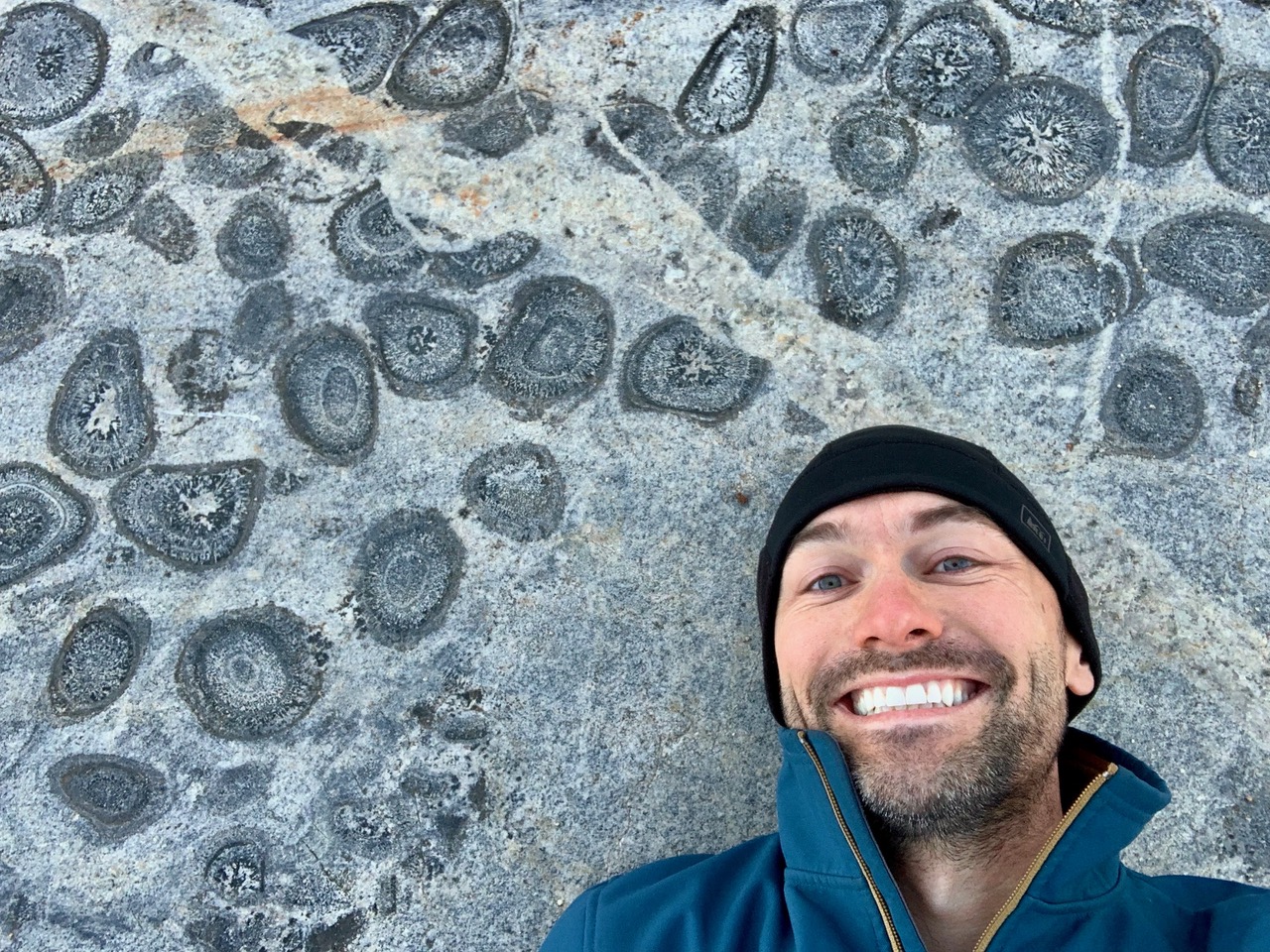
Title: "Orogenic equity, diversity, and inclusion in a supercontinent"
The Grenville Orogeny has historically played a prominent role in our understanding of Mesoproterozoic tectonics to the point it has become broadly synonymous with the global convergence associated with the assembly of Rodinia. Although the majority of workers interpret the tectonics of the Grenville Orogeny as a continental collision with Amazonia, there are several persistent alternatives that propose either that the Mesoproterozoic was characterized by an orogenic quiescence or stagnant lid. Constraining the geodynamic evolution of the Grenville Orogeny and tectonic regime of the Mesoproterozoic Era are key in understanding the evolution of plate tectonics on Earth.
In this presentation, I will discuss some of the recent attempts to constrain the geodynamics and tectonic regime of the Grenville Orogeny and the assembly of Rodinia. Topics of particular interest include the flaws in constraining crustal thickness with zircon trace elements, the proportion of sediment-derived granitoids as defined by oxygen isotopes, and the evaluation of terrane transfer during continental collision using Pb isotopes. All things considered, the Grenville Orogeny carries the hallmarks of a hot collisional orogeny with a relatively thin crust, substantial sediment-magma interaction, and the transfer of tectonically emplaced terranes.
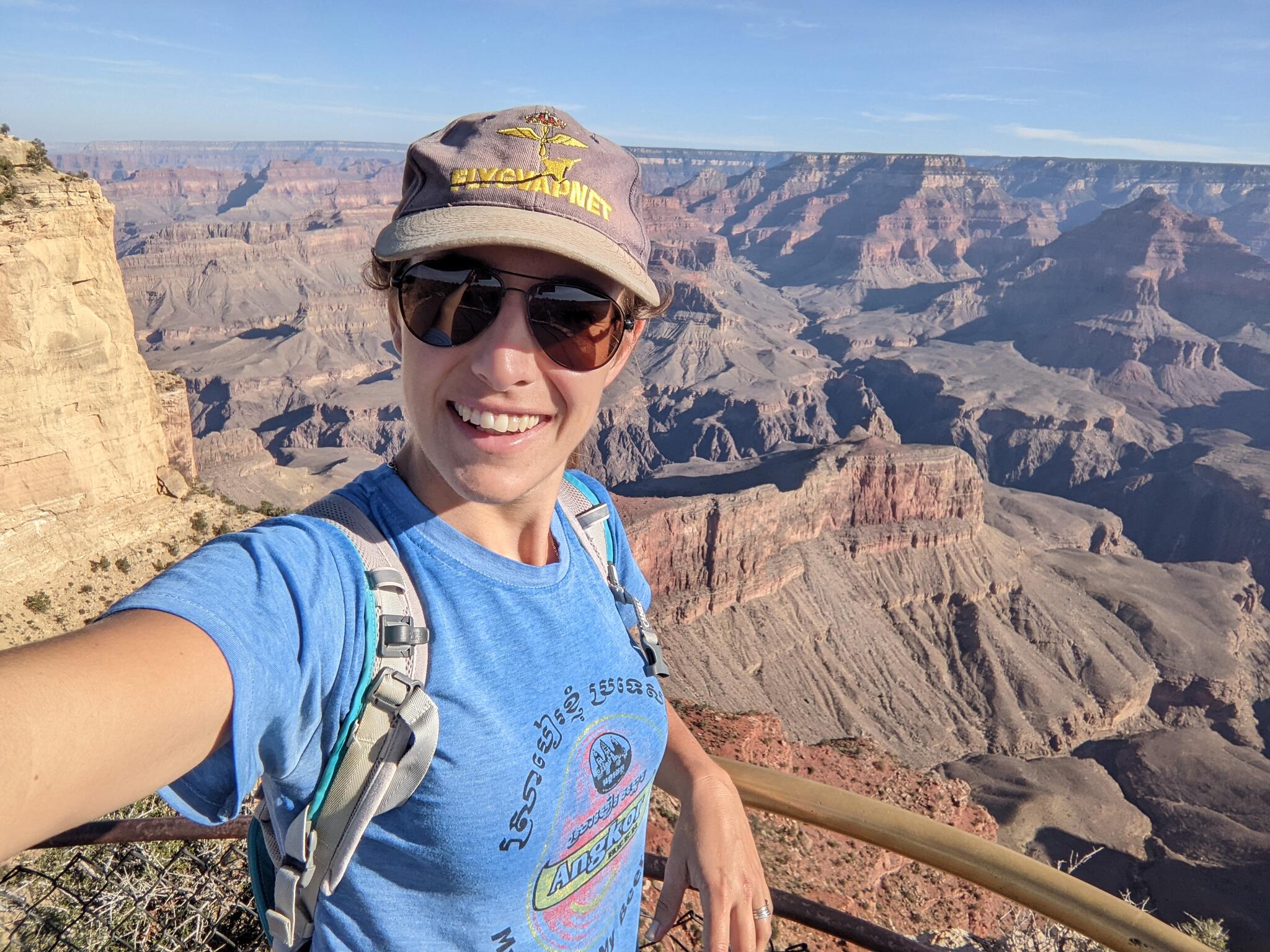
Title: "Critical metal distributions in VMS deposits: The role of sulfide modification during hydrothermal activity, deformation, and metamorphism"
Critical minerals (CMs) are a diverse group of metals and minerals, characterized by important roles in modern and green technologies and potentially at-risk supply chains. Volcanogenic massive sulfide deposits host a variety of critical minerals (CMs) and other trace elements, but modification of sulfides during hydrothermal activity and subsequent deformation and metamorphism can significantly alter their primary distributions. This has major implications for exploration programs targeting CMs, and for their efficient extraction from primary ores and re-processed waste rock.
By combining in-situ microstructural and compositional mapping, we show that CMs are hosted by a range of different sulfides, and that these sulfides responded to deformation and metamorphism at greenschist-facies conditions in drastically different ways. Pyrite is largely unstrained, preserving primary hydrothermal textures, with both early CM-poor low-T pyrite and slightly later, high-T hydrothermal pyrite rich in Co and other CMs, which likely reflects a magmatic input during the main mineralization stage. Pyrrhotite is highly strained, with a moderate decrease in Co content linked to dynamic recrystallization and the local growth of cobaltite. Gallium and Ge occur in coarse hydrothermal sphalerite, but Ga was locally lost by diffusion along grain boundaries, and in sphalerite-free samples, Ga and Ge are hosted by synkinematic chlorite. Indium and Sn are concentrated in hydrothermal chalcopyrite, but it is not yet clear how they were affected by fluid-assisted remobilization of chalcopyrite into porphyroclast tails during deformation. Silver and Pb are concentrated along grain boundaries in dynamically recrystallized pyrrhotite and sphalerite, either introduced by fluids during deformation and/or expelled from the recrystallizing sulfides.
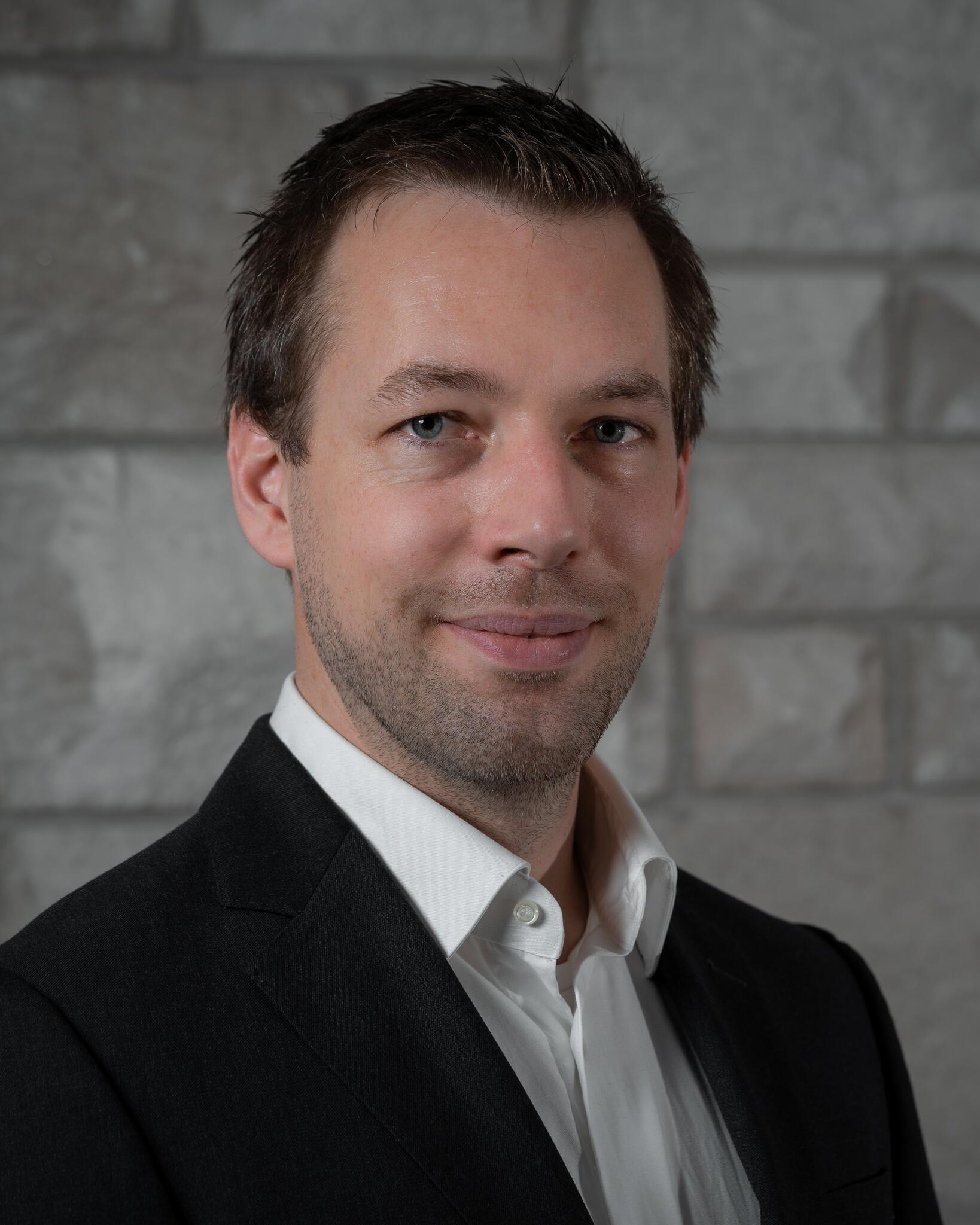
Title: "Trace metal cycling in the Great Lakes: sources, sinks, and biogeochemical controls"
The Environmental Engineering group in the department of Geological Sciences and Engineering at Queen's is working to improve our understanding of trace metal dynamics in the Great Lakes. The North American Great Lakes form a critically important yet complex, serially connected freshwater system. Disentangling the natural and anthropogenic drivers of water quality in the basin is important to manage and mitigate stresses imposed by e.g., climate change and urbanization. In this talk, I will present a high-level overview of our work on i) environmental baselines of metals and trace elements, ii) the biogeochemical processes underlying their spatiotemporal distribution patterns, and iii) potential imprints of human emissions in specific catchments. First, we collaborate with provincial and federal offices to aggregate long-term and basin-scale hydrodynamic and water quality monitoring data. From a selection of >20.000 entries, we recently developed mass-balance models to estimate metal loads carried by tributary rivers, connecting channels, and sedimentation. In addition, we performed field sampling in several Ontario catchments and used analysis of Cu stable isotopes to source-track anomalous metal loads. Finally, we are using metal occurrence in wastewater as a proxy for large-scale human emissions. Trace element analyses in effluent and sludge samples from >40 treatment facilities in the Great Lakes basin were combined with geospatial analyses of their respective sewersheds to assess human emissions and potential impacts from the tributary- to the basin scale. Overall, our work on trace metal biogeochemistry helps improve our understanding of the Great Lakes system and optimize surveillance and management strategies.
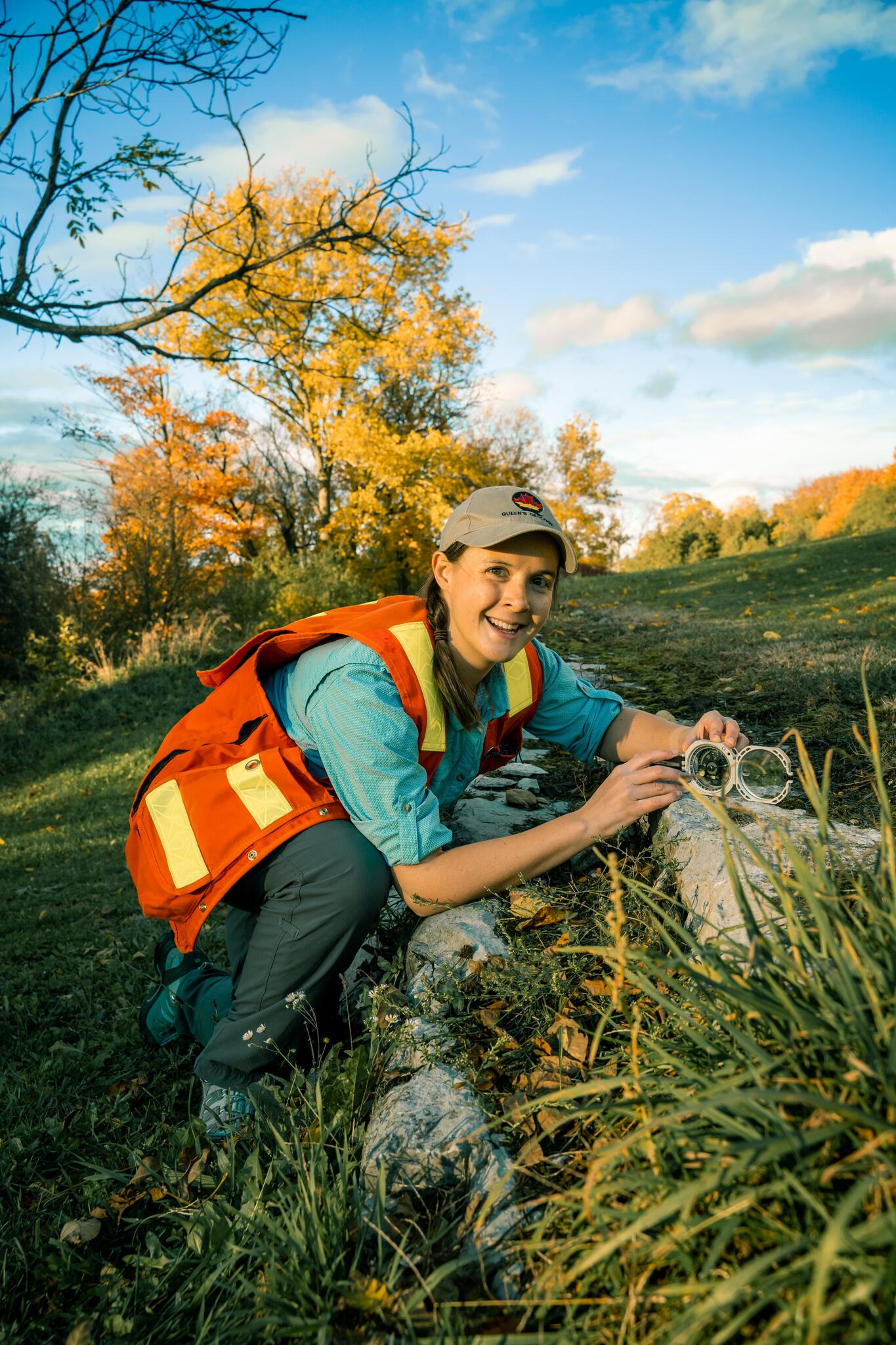
Title:“Coastal cliff rock stability and geotourist perceptions at Hopewell Rocks Provincial Park, New Brunswick"
Natural shoreline rock formations such as sea stacks, arches, and cliffs are unique geotourism destinations in Canada and globally. These formations, such as at Hopewell Rocks Provincial Park in New Brunswick, Canada, form when the rockmass erodes and becomes prone to partial or complete structural failure. Many geotourists visiting these formations (>250,000 per year at Hopewell Rocks) elevate the potential for failure events to cause casualties. Failure events always raise questions about the duration and extent of safety zone delineation and access control. This research aims to evaluate public safety risk of exposure to failure of these rock formations at the Park. This research draws on perspectives from rock mechanics, structural geology, and engineering geology to understand the geohazards and their instability behaviours, as well as insight from psychology and sociology that drive geotourism and human risk perceptions. To date, we have investigated two rockfall events at the Park: the 14 March 2016 Elephant Rock failure and the 5 September 2021 cliff rockfall near Lover’s Arch. We have also analyzed the stability of the Sentinel sea stack using geomechanical numerical models, with input from UAV-based photogrammetry and erosion records, to predict when this formation may become unstable. Lastly, we conducted a public survey and interviews with Park visitors to understand how they value the Hopewell Rocks, and risk perceptions on rock instability. The survey results show support for the idea that New Brunswickers have a strong positive connection to the Hopewell Rocks, and range of risk perceptions of personal safety balanced with a desire to preserve nature. This presentation will present a summary of these investigations and show a glimpse of our ongoing research at the Park.
Panel Speakers
more to come!

Biography:
Dr. McLagan is the PI of the Fire, Earth, Water, Air Contaminant Biogeochemistry Lab (FEWA Lab) began as an Assistant Professor in Environmental Geochemistry in July 2022, jointly appointed between the Dept. of Geological Sciences and Geological Engineering and the School of Environmental Studies. Before this he worked as term-based lecturer at the University of Toronto, and as a researcher at the Technical University of Braunschweig in Germany, and also at Environment & Climate Change Canada. He gained a PhD. from the University of Toronto and Bachelor of Science with honours from Griffith University in Australia. Dr. McLagan’s research uses a total systems approach to improving our understanding of contaminant biogeochemical cycling in the environment with a focus on developing novel, accessible technologies that produce direct, tangible impacts on science, society and the environment.
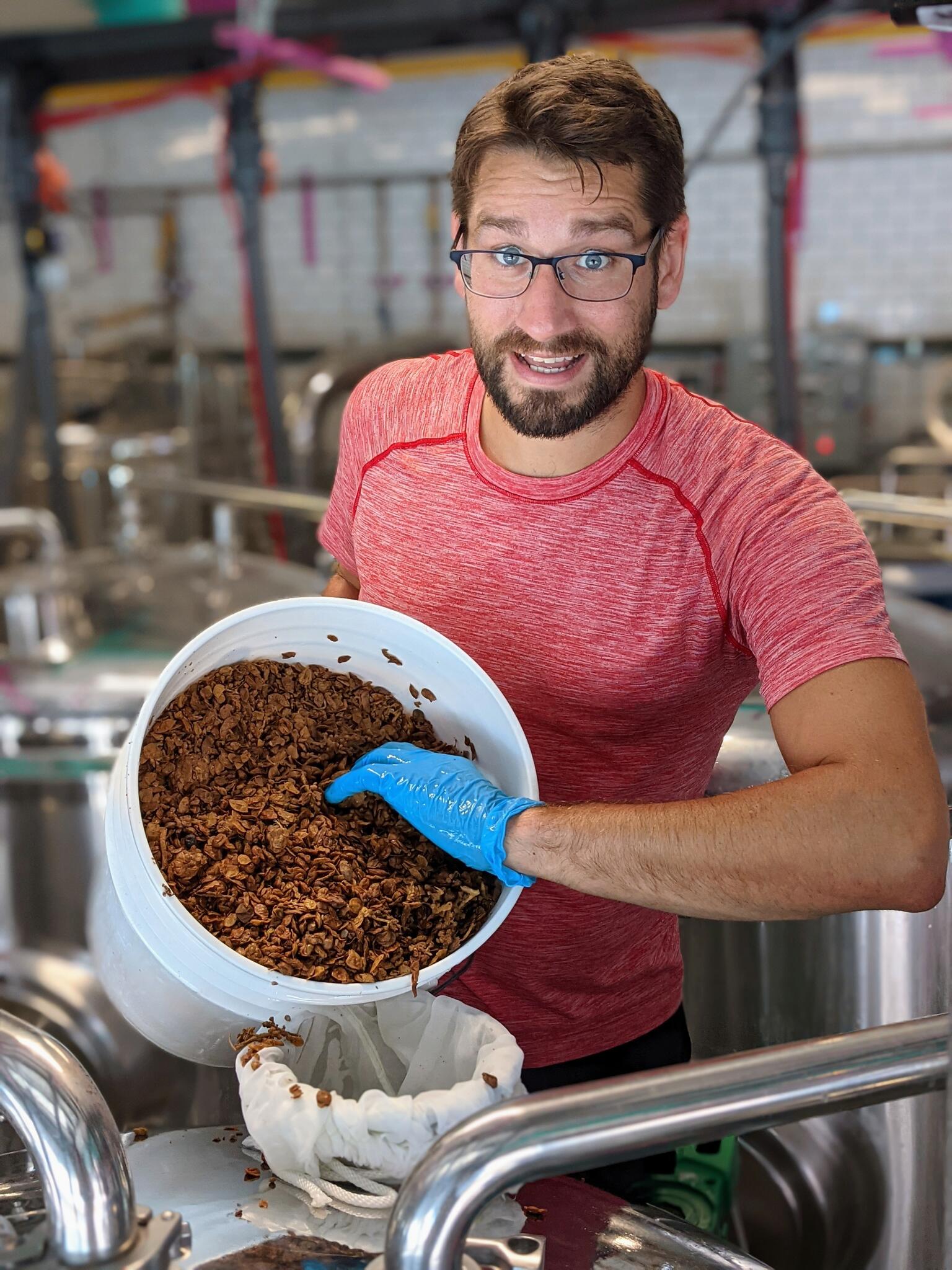
Ryan’s career path has been unusual and sometimes a bit weird. He finished his PhD at Queen’s in 2015, where he worked in carbonates and geochemistry. Since graduating, he has been a sometimes-successful entrepreneur, a postdoctoral researcher, a craft beer brewer, an exploration geologist in the mining industry, an instructional designer for online health science courses, head of a small Ag-tech startup, an adjunct assistant professor, and a geotechnical consultant. Most people have a planned career trajectory, but Ryan’s experience more closely resembles a hike through the bush without a map or a compass or an actual final destination. He does have great company and good snacks, though.
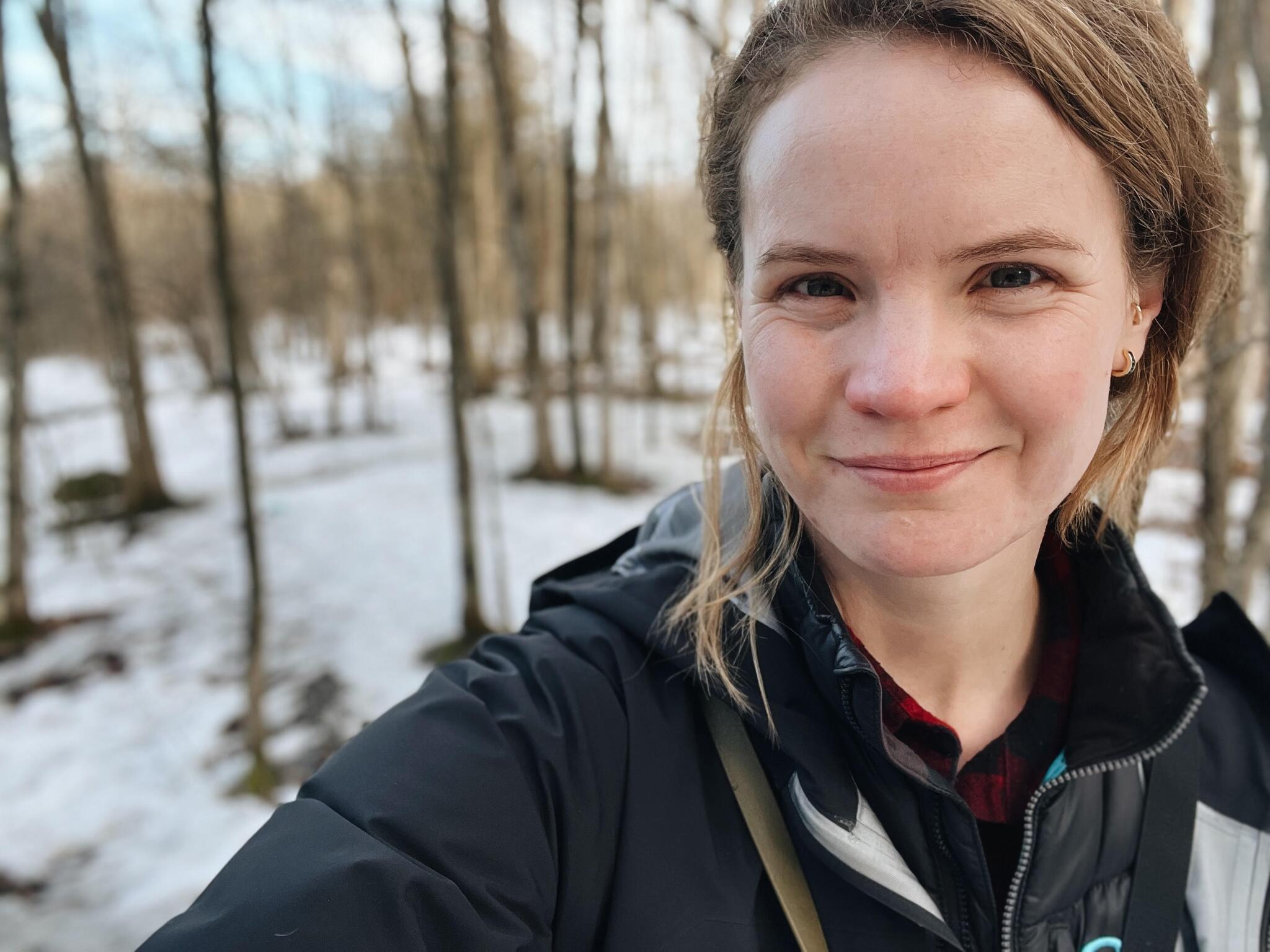
Lindsay completed a BScH in Environmental Geology at Queen’s before pursuing a MSc in Structural Geology with Dr. Laurent Godin. Since graduating in 2015, Lindsay has worked in academia, exploration geology, with the Nuclear Waste Management Organization, and, most recently, in geotechnical consulting. Lindsay works for BGC Engineering based out of the office here in Kingston. She works with the rock mechanics and engineering geology teams and is currently the site investigation lead for the Pueblo Viejo project in the Dominican Republic. Lindsay lives in Kingston with her husband, Ryan, and their wildling ex-street dog, Lentil. Her favourite food is tacos, and her favourite dinosaur is the Archaeopteryx.
Friday Ice Breaker
Where: Grad Club, Queen’s University (162 Barrie Street)
When: 7 – 11pm on Friday, March 31st
Check-in will be starting at 7pm and the ice breaker will be taking place on the entire 2nd floor (just up the main stairs). This is where you will receive your name card and lanyard for the event (otherwise, Saturday morning). Appetizers and a beverage will be provided.
Saturday Night Dinner
Where: Tir Nan Og Irish Pub, Downtown Kingston (200 Ontario Street)
When: 6 – 10pm on Saturday, April 1st
Appetizers, an entrée, and a beverage will be provided.
Poster & Presentation Details
Poster Guidelines:
Poster set up will occur in the mornings (time to be confirmed) of Saturday and Sunday at the Bioscience Complex Atrium. If you are presenting a poster, please prepare it in 36 x 48-inch format at the largest. Poster board assignments will be included in the conference schedule once it become available.
Presentation Guidelines:
Please transfer presentations to organizers by USB drive the morning of your presentation at the latest. There is no formal review process for presentations.
Presentations can be transferred:
- At the check-in desk on Friday evening at the Grad Club icebreaker
- On Saturday or Sunday morning (time to be confirmed) at the registration desk in the Bioscience Complex atrium. Presentations must be prepared in Microsoft PowerPoint using a 16:9 (widescreen) format. Presentation slots are 15 minutes. Plan for a 12-minute presentation with 3 minutes for questions.
Sponsors
This event would not be possible without the donations from our generous sponsors.
- Queen’s University - Department of Geological Sciences & Geological Engineering (Platinum)
- Canadian Geophysical Union (Gold)
- Professional Geoscientists Ontario (Silver)
- Isomass Scientific Inc. (Silver)
- Queen's University - Student Initiative Fund (Silver)
- Queen's University - Principal's Student Initiative Fund (Silver)
- Prospectors & Developers Association of Canada (Bronze)
- Canadian Society of Exploration Geophysicists (Bronze)
- Society of Economic Geologists Canada Foundation (Bronze)
- BGC Engineering (Bronze)
- Travelling Geologist (Bronze)
AESRC 2023 Planning Committee
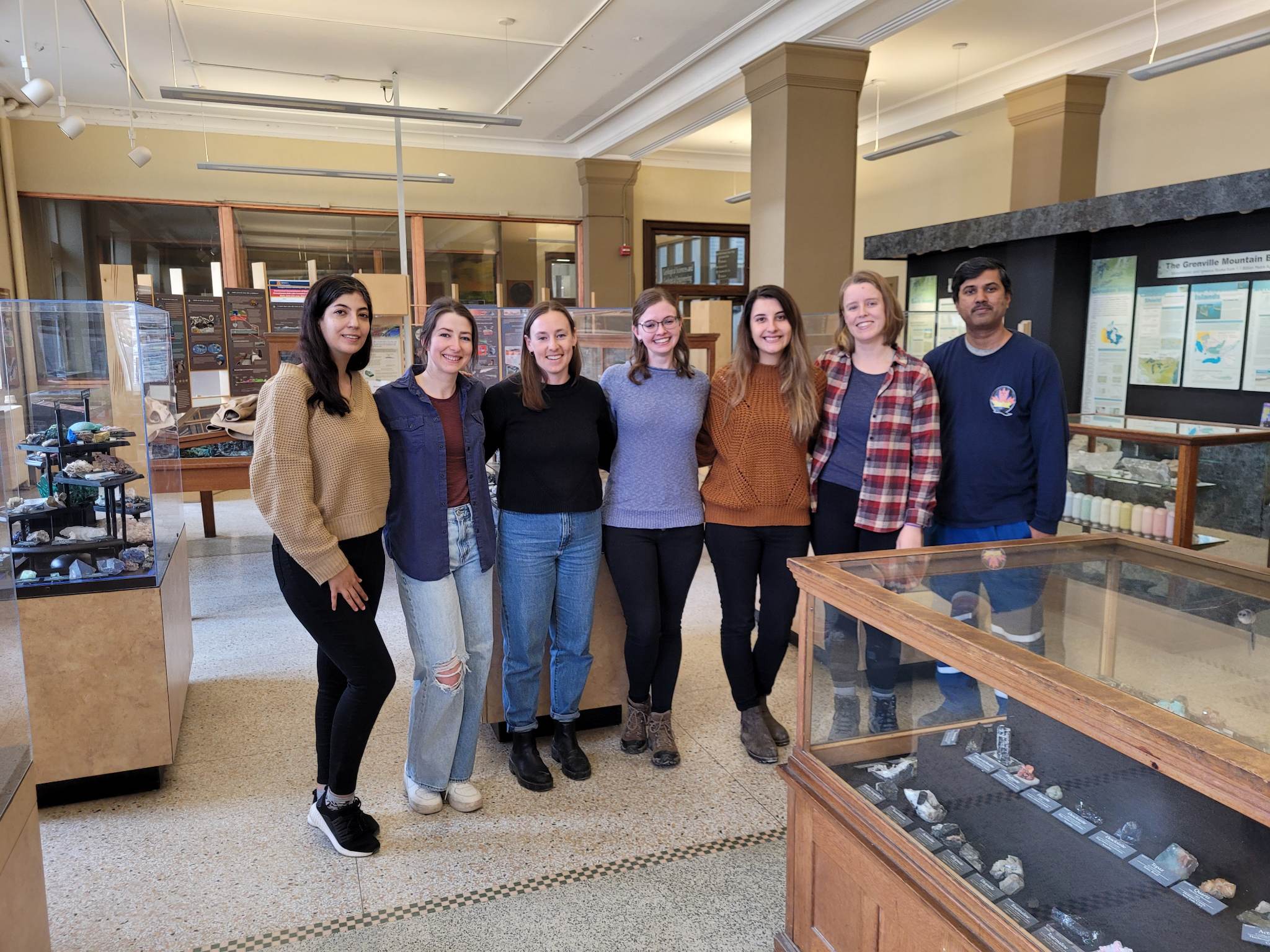
- Allison Howes – Conference Chair
- Taylor Rae Morrell & Brittany Greco – Event Chairs
- Allie Surrette – Sponsorship Chair
- Tassiane Junqueira – Social Event Chair
- Kiana Damavandi – Media Chair
- Arijit Chattopadhyay – Outreach Chair
Contact Us
Any questions? Email us at aesrc23@queensu.ca

